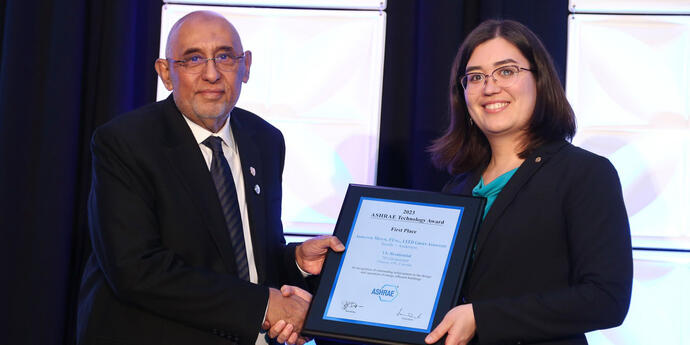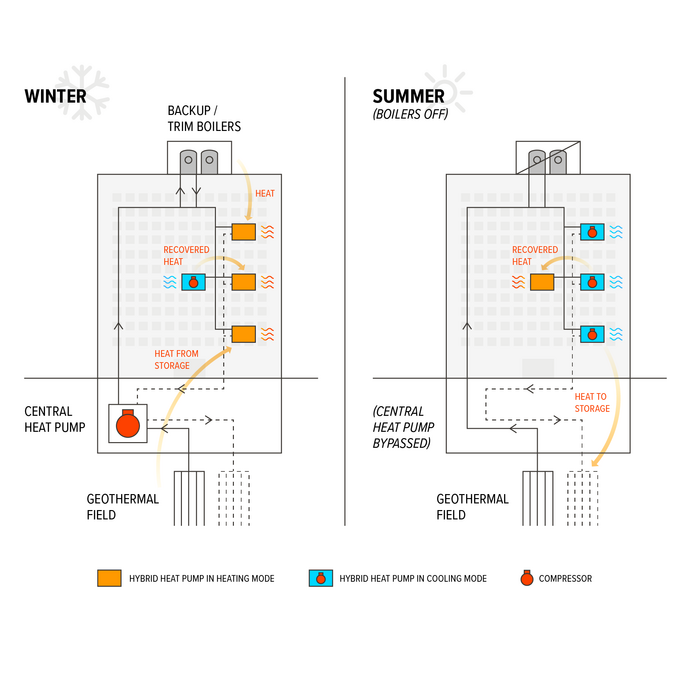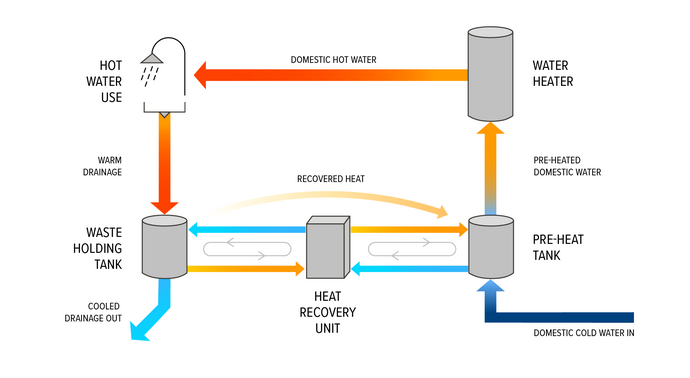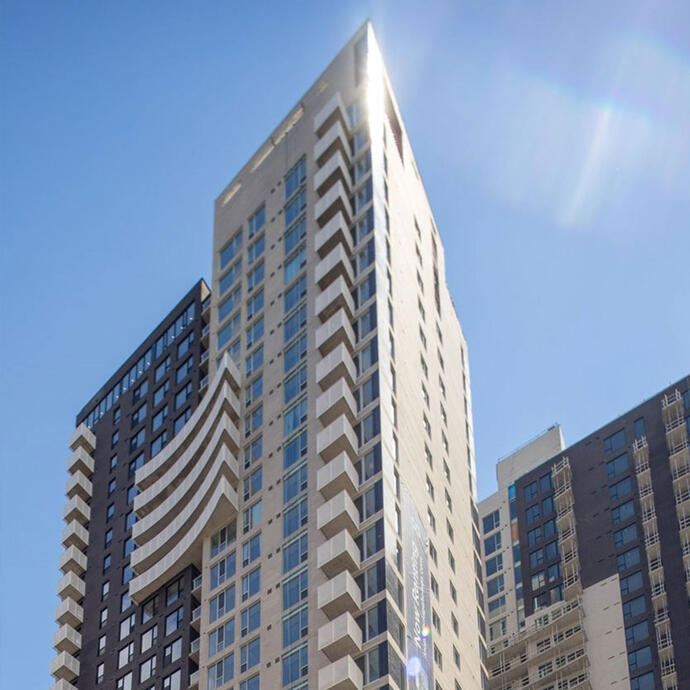The 29-storey, 179,000 square foot multi-unit residential development is part of the larger Loop by Claridge development in downtown Ottawa, and was completed in 2021. The mechanical design of the award-winning tower makes particularly innovative use of both a waste water heat recovery system, and hybrid heat pumps in combination with geothermal technology. The project was recognized at the ASHRAE 2023 Winter Conference in Atlanta at the beginning of February, where Smith + Andersen Associate Adrianne Mitani accepted the ASHRAE Technology Award (First Place – Residential Category) on behalf of the project team.
The goal for 70 Gloucester was to achieve an energy and greenhouse gas reduction of 50 per cent or greater compared to a traditional natural gas-based National Energy Code for Buildings (NECB) 2015 reference building. This ambitious energy and greenhouse gas reduction target called for an atypical approach, with energy efficiency critical to both the initial design and the long-term operations of the building.

Key design features of 70 Gloucester include:
+ Geothermal and hybrid heat pump system
+ Waste water energy recovery system
+ Energy recovery ventilators
+ Pool air handling unit energy recovery for pool water heating
+ LED lighting and occupancy sensors

Geothermal field technology was one of the innovative solutions used to recover and re-use energy to improve the overall efficiency of the building and reduce overall energy consumption.
A Deep (Deep) Dive into Energy Efficiency.
Due to 70 Gloucester’s built-up location and constrained footprint, a vertical geothermal system with a closed-type ground heat exchanger was implemented as an energy source and sink for heating and cooling the building. The geothermal field is made up of 64 boreholes that each reach a depth of 600 feet. The size was calculated to use up the available footprint of the parking garage beneath the building, while also achieving a depth that would provide enough heating and cooling capacity for the calculated annual loads of the building. Hybrid heat pumps in each unit are used to increase shoulder season heat recovery.
Double-duty Waste Water.
A waste water energy recovery system for 70 Gloucester was designed to extract heat from outgoing sanitary waste water and use it to preheat domestic water. The system circulates water from a large sanitary waste retention tank and extracts heat from it using a refrigeration cycle. The heat is rejected into a domestic water preheat tank, which the building’s main domestic water heaters draw from rather than directly from incoming domestic cold water. The energy recovered by the waste water heat recovery system and transferred to the domestic water preheat tank reduces the amount of natural gas required to heat the domestic hot water for the building, and relieves some of the load on the domestic water heaters. Low-flow water fixtures are also used to reduce water and energy usage from hot water heaters and booster pumps.
The development achieved 13.2 per cent energy savings and a 12.2 per cent reduction in greenhouse gas emissions when compared to the OBC 2017 (NECB 2015).

Heat energy in the outgoing sanitary waste water is reused to pre-heat the domestic hot water before it is heated by the domestic hot water heaters.

